Comments / Questions (25)
![]() Helene wrote:
Helene wrote:
Hej! Har tidigare sänt en fråga - då jag inte kan tolka tabellerna A1 och A2. Kommer stickningen av de yttersta maskorna bli 1 slätstickning 2 Resårsticning 3 Mossstickning?
10.12.2025 - 17:31DROPS Design answered:
Hei Helena. Kan ikke finne noen tidligere spørsmål fra deg ang denne vesten. Når du strikker etter diagram A.1 og A.2 er det rettmasker over rattmasker og vrangmasker over vrangemasker (som en vanlig vrangbord), mens ytterste maske strikkes med en i-cord kant. Se gjerne hjelpevideoen: Hur man stickar en i-cord kant, fram och tillbaka. mvh DROPS Design
15.12.2025 - 10:27
![]() Anita wrote:
Anita wrote:
Bonjour 2 questions : > Les 6 mailles avant et après les 2 mailles de la bordure i-cord ne ressemblent pas à des côtes 1/1 : est-ce normal ? (contrairement aux 121 mailles centrales) > sur l'envers, quelle maille (envers ou endroit) pour la dernière maille avant les 8 dernières mailles de la bordure sachant qu'elle est endroit sur l'endroit ? Merci
30.11.2025 - 23:09DROPS Design answered:
Bonjour Anita, les 6 mailles de A.1 à 2 m des bords sont des côtes 1/1, A.1 commence par 1 m endroit, 1 m envers, mais A.2 va commencer par 1 m envers, 1 m endroit (dans les 2 cas, vu sur l'endroit). Bon tricot!
01.12.2025 - 11:00
![]() Marion wrote:
Marion wrote:
Can this be knitted on flat needles? I dont understand the complicated circular knitting needles. It has no side seams so how is it knitted on circular needles?
19.10.2025 - 23:52DROPS Design answered:
Hi Marion, The reason we recommend circular needles is the number of stitches on each piece. Using flat needles you risk stitches coming off the back end of the needle. But of course you are free to choose if you would rather use flat needles. Regards, Drops team.
20.10.2025 - 06:33
![]() Lucette wrote:
Lucette wrote:
Bonjour, je ne comprends pas les premières explications DOS : ”tricoter jusqu'à ce qu'il 9 mailles ” alors que l’I Cord compte 8 mailles . Merci
05.10.2025 - 11:10DROPS Design answered:
Bonjour Lucette, à ce niveau, on tricote les côtes 1/1 avec 2 m I-cord de chaque côté, et, pour que les côtes soient symétriques, on tricote ainsi: 2 m I-cord + les 6 m de A.1, puis on continue les côtes 1 m end/1 m env jusqu'à ce qu'il reste 9 m et on tricote 1 maille endroit (ainsi les côtes commencent et se terminent de la même façon) puis 6 m de A.2 et 2 m I-cord. Bon tricot!
06.10.2025 - 07:54
![]() Lucette wrote:
Lucette wrote:
Bonjour, après les 2 premières de l’I Cord, les 6 mailles suivantes se sont des côtes 1/1 ? Merci
05.10.2025 - 10:55DROPS Design answered:
Bonjour Lucette, tout à fait, en début de rang sur l'endroit, ces côtes se tricotent en commençant par 1 m end (on termine par 1 m envers), et en fin de rang sur l'endroit, ces côtes se commencent par 1 m envers (et on termine par 1 m endroit avant les 2 m I-cord). Bon tricot!
06.10.2025 - 07:51
![]() Titti wrote:
Titti wrote:
Hej igen. Kunde nog inte tänka klart igår kväll. Problemet löst.
20.04.2025 - 10:53
![]() Titti wrote:
Titti wrote:
Fattar inte början på v halsen, har satt maskan på flätstickan och stickat nästa. Sätt maskan som är på flätstickan på en tråd tillsammans med de sista maskorna på varvet utan att sticka dessa. Hur många maskor ska jag sätta på tråden?
19.04.2025 - 16:46DROPS Design answered:
Hej Titti, du sätter alle masker fra højre skulder på en tråd, sammen med den du har på flätstickan. Nu fortsætter du frem og tilbage over venstre skulder, samtidig som du tager ind til V-hals :)
30.04.2025 - 11:42
![]() Titti wrote:
Titti wrote:
Är 1a varvet rät el avigsidan
06.04.2025 - 10:37DROPS Design answered:
Hej Titti, du bestemmer selv hvilken side du vil have som retside, vi bruger normalt første pind som vrangen, men da du starter med rib betyder det ikke noget :)
09.04.2025 - 12:27
![]() Weyler,Gabriele wrote:
Weyler,Gabriele wrote:
Das Rückenteil des Pullunders wird mit der Länge der rechts gestrickten Maschen u.a. mit 32 cm angegeben. Wird das gestrickte Bündchen rechts/links mit 6 cm dazugerechnet oder ist es in den 32 cm enthalten.
19.03.2025 - 12:03DROPS Design answered:
Liebe Frau Weyler, wenn man z.B. unter Rückenteil Bei einer Länge von 28-29-30-31-32-33 cm liest, wird diese Länge ab Anschlagskante gemessen = gesamte Länge. Viel Spaß beim Stricken!
19.03.2025 - 16:14
![]() Lys Matisse wrote:
Lys Matisse wrote:
Bonjour, pourriez-vous m'indiquer les mensurations pour la taille XXXL? MERCI
01.03.2025 - 17:45DROPS Design answered:
Bonjour Mme Matisse, vous trouverez toutes les mesures finales pour chaque taille dans le schéma en bas de taille, la taille XXXL étant la dernière taille, c'est le dernier nombre qui s'appliquera à chaque fois. Retrouvez ici plus d'infos sur le schéma. Bon tricot!
03.03.2025 - 09:16
Steel Sky Vest#steelskyvest |
|||||||
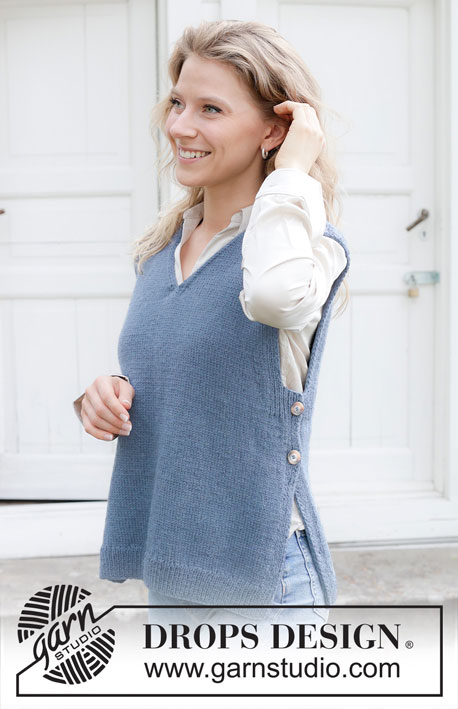 |
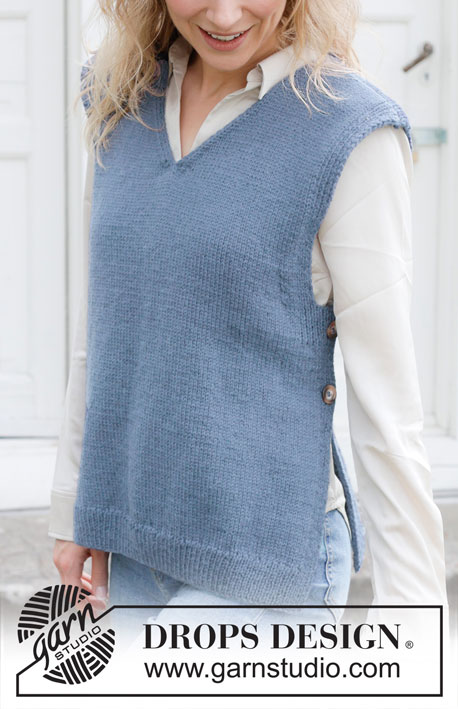 |
||||||
Knitted waistcoat in DROPS Lima or DROPS Fiesta. Piece is knitted from bottom up with V-neck vents in the sides and i-cord. Size: S - XXXL
DROPS 254-38 |
|||||||
|
---------------------------------------------------------- EXPLANATION FOR THE PATTERN: ---------------------------------------------------------- PATTERN: See diagrams A.1 and A.2. Diagrams show all rows in pattern seen from the right side. EDGE WITH I-CORD: BEGINNING OF ROW: Slip 1 stitch purlwise with strand in front of piece, knit 1 and work 6 stitches in A.1. END OF ROW: Work until 8 stitches remain on row, work 6 stitches in A.2, slip 1 stitch purlwise with strand in front of piece, knit 1. DECREASE TIP-1 (applies to armholes): All decreases are done from the right side! BEGINNING OF ROW: Work as before over the first 10 stitches, slip 1 stitch knitwise, knit 1, pass slipped stitch over stitch worked (= 1 stitch decreased). END OF ROW: Work until 12 stitches remain on needle, knit 2 together (= 1 stitch decreased), work rest of row as before. DECREASE TIP-2 (applies to neck on back piece): All decreases are done from the right side! BEGINNING OF ROW: Work as before over the first 3 stitches, slip 1 stitch knitwise, knit 1, pass slipped stitch over stitch worked (= 1 stitch decreased). END OF ROW: Work until 5 stitches remain on needle, knit 2 together (= 1 stitch decreased), knit 3. CAST-OFF TIP: To get a nice finish on the shoulder knit the first 2/last 2 edge stitches together while casting off with knit stitches. ---------------------------------------------------------- START THE PIECE HERE: ---------------------------------------------------------- WAISTCOAT - SHORT OVERVIEW OF PIECE: Worked back and forth on circular needle, bottom up. Work back piece and front piece separately. Sew the parts together on the shoulders and sew on buttons for decoration in each side. BACK PIECE: Cast on 117-127-137-149-163-177 stitches on circular needle size 3.5 mm with DROPS Lima or DROPS Fiesta. Work EDGE WITH I-CORD, work rib (= knit 1/purl 1) until 9 stitches remain, knit 1 and work EDGE WITH I-CORD. Work rib and edges like this until piece measures 5-5-5-6-6-6 cm. Switch to circular needle size 4 mm and work 1 row from right side as follows: Work edge as before (= 8 stitches), work in stocking stitch while AT THE SAME TIME decreasing 9-11-13-13-15-17 stitches evenly over the next 101-111-121-133-147-161 stitches, work edge as before (= 8 stitches) = 108-116-124-136-148-160 stitches. Continue in stocking stitch and 8 edge stitches in each side as before. Remember to follow the knitting tension! When piece measures 28-29-30-31-32-33 cm, work in addition 9-9-11-15-19-23 stitches rib (= A.1/A.2) inside the 8 edge stitches, i.e. work edges over 17-17-19-23-27-31 stitches in each side. When piece measures 32-33-34-35-36-37 cm, begin decrease for armholes as explained below. Cast off 9-9-11-15-19-23 stitches 1 time in each side (now work EDGE WITH I-CORD over 8 stitches as before in each side until finished measurements). Then decrease stitches for armholes on every 4th row - read DECREASE TIP-1 and decrease as follows: Decrease 1 stitch 3-5-6-7-8-9 times in total in each side = 84-88-90-92-94-96 stitches on needle. When piece measures 50-52-54-56-58-60 cm, work the middle 28-28-30-30-32-34 stitches in rib (= A.1). When piece measures 52-54-56-58-60-62 cm, cast off the middle 20-20-22-22-24-26 stitches for neck, and finish each shoulder separately. SHOULDER: = 32-34-34-35-35-35 stitches. Work in stocking stitch with 8 edge stitches as before towards armhole, 2 stitches i-cord and 2 stitches rib towards the neck. At the same time decrease for neck – read DECREASE TIP-2 and decrease on every other row 2 times towards neck = 30-32-32-33-33-33 stitches remain on each shoulder. Cast off when piece measures 56-58-60-62-64-66 cm – read CAST-OFF TIP. FRONT PIECE: Cast on 117-127-137-149-163-177 stitches on circular needle size 3.5 mm with DROPS Lima. Work EDGE WITH I-CORD - read explanation above, work rib (= knit 1/purl 1) until 9 stitches remain, knit 1 and EDGE WITH I-CORD. Work rib and edges like this until piece measures 5-5-5-6-6-6 cm. Switch to circular needle size 4 mm and work 1 row from right side as follows: Work edge as before (= 8 stitches), work in stocking stitch while AT THE SAME TIME decreasing 9-11-13-13-15-17 stitches evenly over the next 101-111-121-133-147-161 stitches, work edge as before (= 8 stitches) = 108-116-124-136-148-160 stitches. Continue with stocking stitch and 8 edge stitches in each side. When piece measures 28-29-30-31-32-33 cm, work in addition 9-9-11-15-19-23 stitches rib (= A.1/A.2) inside the 8 edge stitches, i.e. work edges over 17-17-19-23-27-31 stitches in each side. When piece measures 32-33-34-35-36-37 cm, begin decrease for armholes as explained below. Cast off 9-9-11-15-19-23 stitches 1 time in each side (now work EDGE WITH I-CORD over 8 stitches as before in each side until finished measurements) = 90-98-102-106-110-114 stitches. Then decrease stitches for armholes and V-neck. In size S and M decrease for V-neck begins after decrease for armhole is done, but in size L, XL, XXL and XXXL decrease for V-neck begins before decreases for armhole are done. Read the sections below before continuing in these sizes. Insert a marker thread in the middle of piece so that there are 45-49-51-53-55-57 stitches on each side of marker thread (marker thread is used when making V-neck). ARMHOLE: Decrease for armholes on every 4th row - remember DECREASE TIP-1 and decrease as follows: Decrease 1 stitch 3-5-6-7-8-9 times in each side. V-NECK: Decrease for V-neck when piece measures 40-41-42-43-44-45 cm from cast-on edge (i.e. piece measures 8 cm from where 9-9-11-15-19-23 stitches were cast off in each side for armholes). LEFT SHOULDER (V-neck): Work first row as follows from right side: Work as before until 1 stitch remain before marker thread, slip 1 stitch on a cable needle in front of piece, knit 1. Slip stitch on cable needle on to a thread together with the last stitches on needle without working these stitches (= right shoulder). Turn piece. ROW 2 (= wrong side): Slip 1 stitch purlwise with strand in front of piece, knit 1 (= 2 edge stitches), purl until 8 stitches remain and work 8 edge stitches as before. ROW 3 (= right side): Work 8 edge stitches as before, knit until 5 stitches remain on needle, knit 2 together, knit 1, slip 1 stitch purlwise with strand in front of piece, knit 1. Repeat 2nd and 3rd row until decrease for V-neck have been done 12-12-13-13-14-15 times. When all decreases for armhole and V-neck are done, there are 30-32-32-33-33-33 stitches on row. Work with 2 edge stitches towards V-neck, stocking stitch and 8 edge stitches towards armhole. Cast off when piece measures 56-58-60-62-64-66 cm – remember CAST-OFF TIP. RIGHT SHOULDER (V-neck): Slip stitches for right shoulder back on circular needle size 4 mm. Work first row as follows from right side: Slip first stitch purlwise with strand in front of piece, knit until 8 stitches remain and work 8 edge stitches as before. ROW 2 (= wrong side): Work 8 edge stitches as before, purl until 2 stitches remain on needle, slip 1 stitch purlwise with strand in front of piece and knit 1. ROW 3 (= right side): Slip 1 stitch purlwise with strand in front of piece, knit 1 (= 2 edge stitches), knit 1, slip 1 stitch knitwise, knit 1 and pass slipped stitch over stitch worked (= 1 stitch decreased), knit until 8 stitches remain and work 8 edge stitches as before. Repeat 2nd and 3rd row until decrease for V-neck have been done 13-13-14-14-15-16 times. When all decreases for armhole and V-neck are done, there are 30-32-32-33-33-33 stitches on row. Work with 2 edge stitches towards V-neck, stocking stitch and 8 edge stitches towards armhole. Cast off when piece measures 56-58-60-62-64-66 cm – remember CAST-OFF TIP. ASSEMBLY: Sew the shoulder seams. Sew on 2 buttons for decoration in each side of waistcoat, place edge stitches from front piece over edge stitches from back piece, then fasten button through both layers. Place top button approx. 1 cm from armhole and place the next approx. 9-10 cm below. |
|||||||
Diagram explanations |
|||||||
|
|||||||
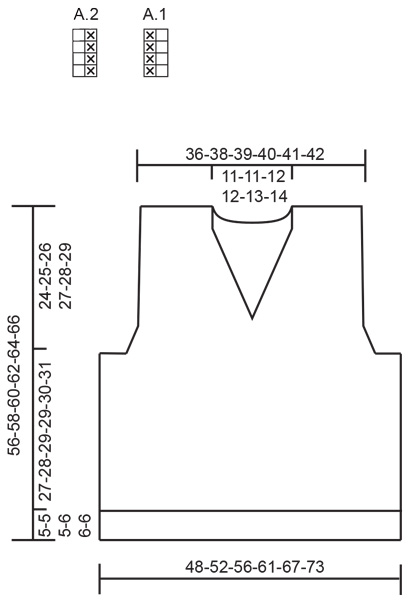 |
|||||||
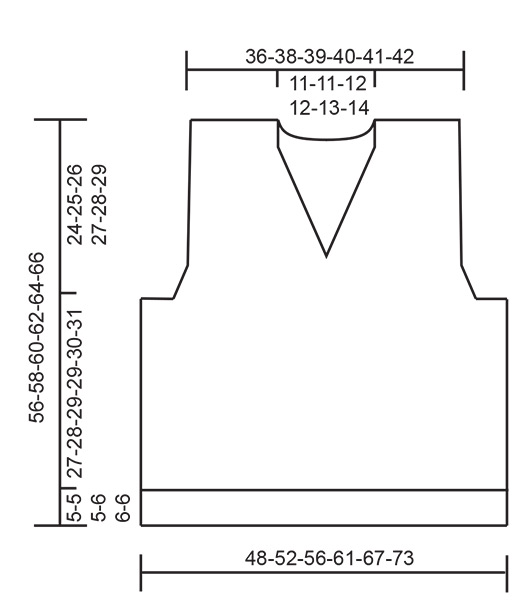 |
|||||||
Have you finished this pattern?Tag your pictures with #dropspattern #steelskyvest or submit them to the #dropsfan gallery. Do you need help with this pattern?You'll find 19 tutorial videos, a Comments/Questions area and more by visiting the pattern on garnstudio.com. © 1982-2025 DROPS Design A/S. We reserve all rights. This document, including all its sub-sections, has copyrights. Read more about what you can do with our patterns at the bottom of each pattern on our site. |
|||||||







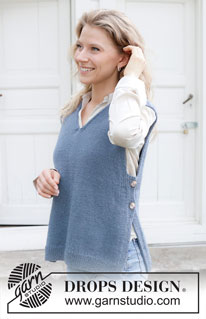
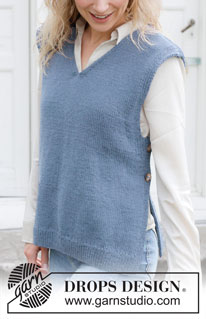
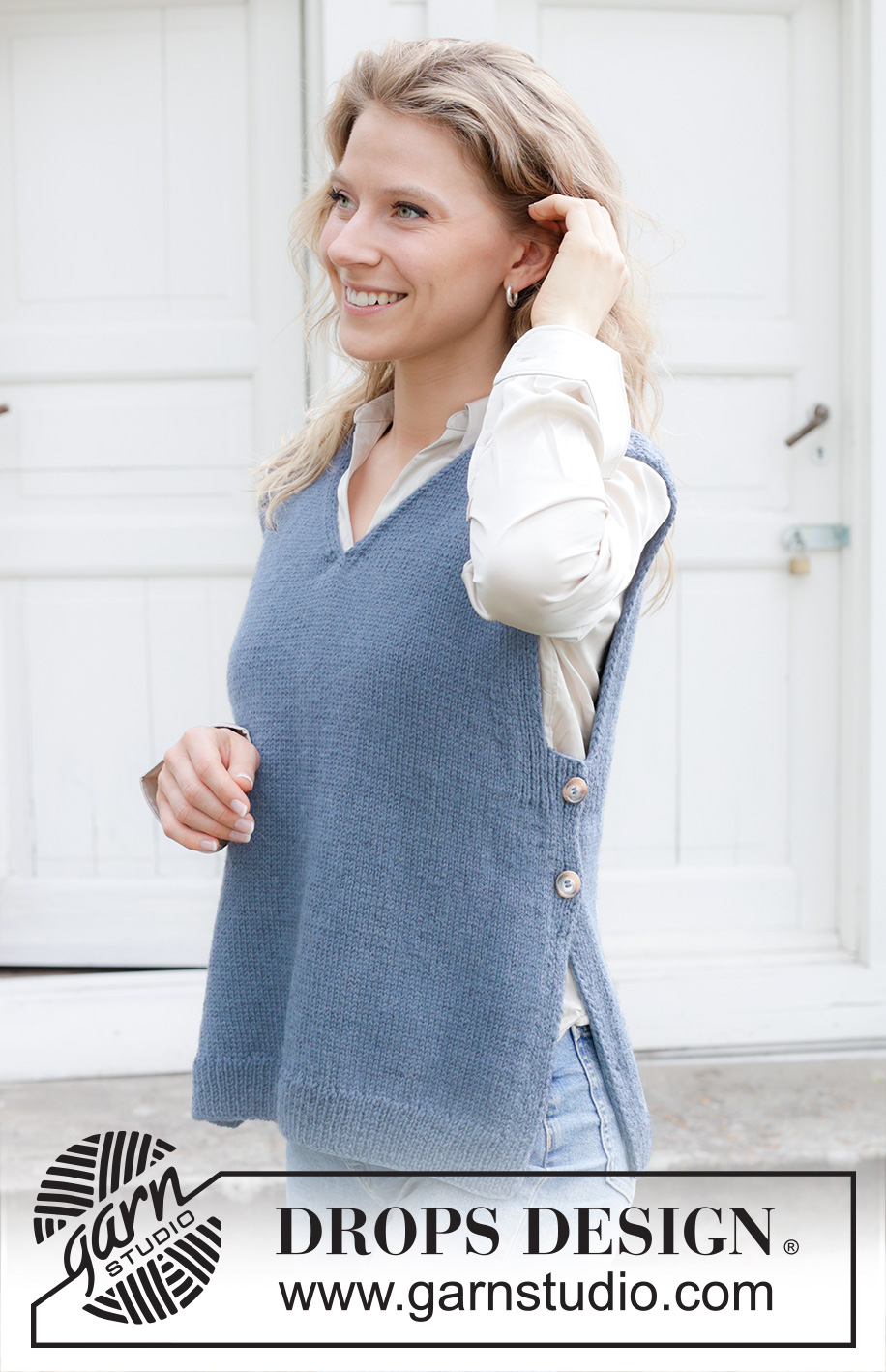
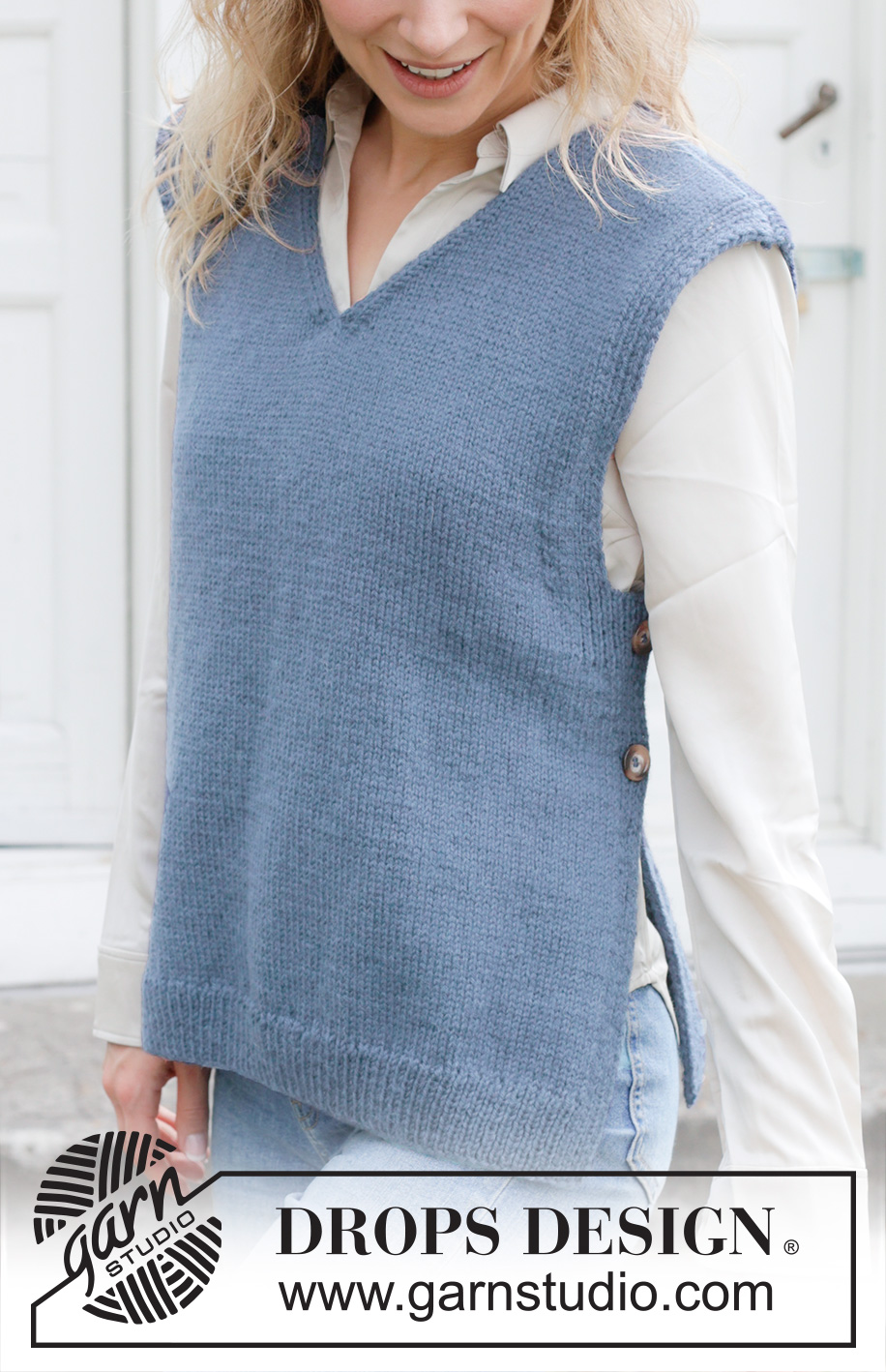

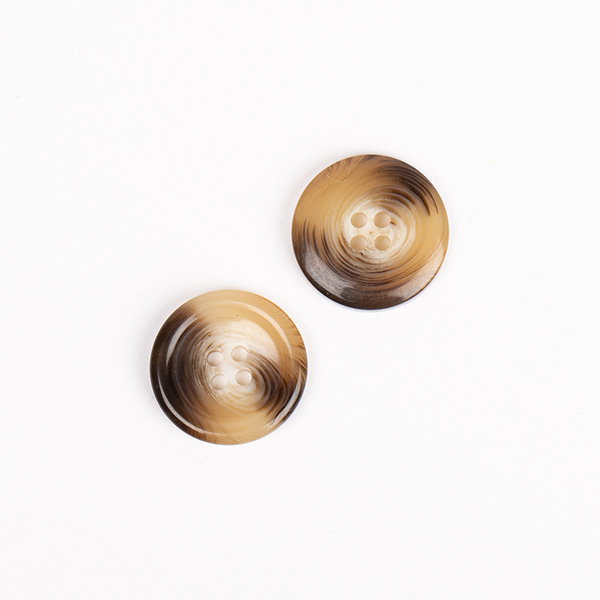

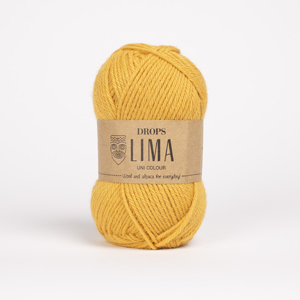
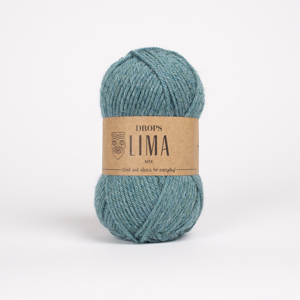













































Post a comment to pattern DROPS 254-38
We would love to hear what you have to say about this pattern!
If you want to leave a question, please make sure you select the correct category in the form below, to speed up the answering process. Required fields are marked *.